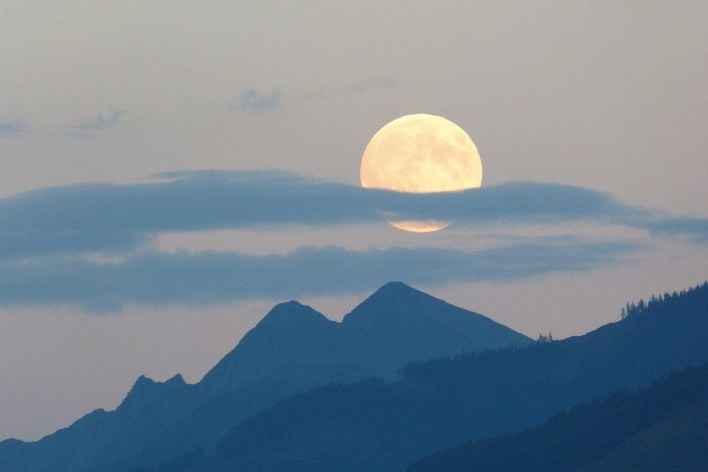Tonight will host what scientists have confirmed to the biggest, brightest full moon of the entire year. Some
know it better as a supermoon, which is a full moon near its perigee (or closest approach to Earth in its elliptical orbit). This closeness means that the lunar disc will be visually stunning, shining up to 30% brighter and presenting a profile nearly 14% larger than the year’s dimmest full moon.
Technically, November's supermoon is also called the
Beaver Moon, a traditional name that's said to either refer to the time when hunters set beaver traps before the freezing of the waterways or to increased beaver activity preparing their winter lodges. This supermoon will be the closest one since 2019, coming within 221,800 miles from Earth. Comparatively, last month's supermoon was 2,780 miles further out.
From an astrological standpoint, 2025's Beaver Moon carries quite a bit of significance, as the moon's peak is positioned within the sign of Taurus, which governs themes of values, comfort, stability, and material possessions. Astrologers say that the energy from this alignment urges individuals toward introspection regarding their financial security, self-worth, and the simple comforts they find grounding in their daily lives. They also believe that this is a time of release, a call to action to better one's self-care and inner peace before year's end.

Purists will argue the
full moon phase is already over, which indeed occurred at 8:19 a.m. Eastern Time, but even as the sun sets later today, the moon will be at its perigee, thus appearing massive and brilliantly bright (weather permitting). However, for those hampered by clouds, poor visibility, or geographical challenges, dedicated astronomical organizations are hosting free, high-definition livestreams (like that by The Virtual Telescope Project above). Sometimes, these feeds actually offer crisper and better views of the moon than your own eyes or hardware, showing things like a magnified view of the moon’s surface.
Tonight is not only a great opportunity for children or amateur astronomers to point their eyes/telescopes skyward, but also encourages folks worldwide to pause and connect with nature.
Looking ahead, there's actually one last supermoon event after tonight's, projected to occur on December 4.

